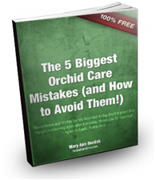 Phragmipedium orchids are more commonly known as slipper orchids. Twenty species of these types of orchids can be found from South West Mexico to Central and South America. The flowers are quite unique with colors ranging from the shades of green, pink, orange and red. Some species of phragmipediums can last for 6 to 11 months at a time.
Phragmipedium orchids are more commonly known as slipper orchids. Twenty species of these types of orchids can be found from South West Mexico to Central and South America. The flowers are quite unique with colors ranging from the shades of green, pink, orange and red. Some species of phragmipediums can last for 6 to 11 months at a time.
The most important thing to remember about phragmipediums is the moisture requirements it has. Now if you want to grow these species of orchids there are certain things you need to consider. In order to grow them successfully there are certain decisions you have to make. Here are 5 questions you need to ask yourself to help you with your decisions:
How much light do I give them?
Phragmipediums need bright indirect sunlight to successfully produce vibrant blooms. They can be placed on South or West windowsills and be left there for hours at a time. Artificial light also works for these types of orchids such as fluorescent light bulbs or metal halide lamps.
You can always check their leaves to figure out if they are getting sufficient light. If you see that the leaves are becoming yellowish, then it means they need more sunlight. Dark green leaves means they need less of it. The perfect color for the leaves is light-green, this means that the orchids are enjoying the proper lighting.
How much water and humidity do they need?
These types of orchids thrive in humidity levels of 60% to 70%. In these conditions, phragmipedium flowers can grow best. Although its hybrids can also flourish well under humidity levels that do not drop below 35%.
One specific rule for these plants that you must follow is to always keep the roots moist. Some even go as far as growing these orchids in pots sitting in a small tray in about a centimeter of water. Change this water once a week. Water the plant just when the medium is starting to dry with an amount equaling to the volume of the pot.
Never leave water on the crown of the plant because this can cause the roots to rot. Use rain water or naturally soft water if possible. If you decide to water them with hard water, hose it down once a month to remove salt residue.
What kind of pots and potting media should I use?
Plastic pots and clay pots are best for phragmipediums. A good suggestion would also be placing the plastic pots inside larger clay pots. Clay pots stay cool during warm weathers and protect the plastic pots from heating and drying up the roots when exposed to sunlight.
Choose a potting medium that effectively holds moisture and has a lot of ventilation so the roots can breathe and are kept moist. Fir bark mixed with 1 part charcoal and perlite are preferred for these types of orchids. This kind of mixture will keep the roots moist and provide adequate drainage for the orchid.
What is the ideal temperature to keep it in?
Phragmipediums are kept in places with daytime temperatures of 70-80°F and nighttime of 50-60°F.
Monitoring your flowers helps a lot in the growth of the flowers. Cooler temperatures during nighttime can produce vibrant and colorful blooms.
Although they can tolerate extreme temperatures, it is still best to grow them in these conditions to keep them healthy. Air movement is also critical to monitor together with temperature. Intermediate conditions can still produce a healthy plant just as long as it is not left in extreme conditions for more than a total of two weeks.
How often must it be repotted?
Phragmipediums usually need to be repotted ever one to two years. When doing so, check if the roots have some rotting in them. Cut off any dead ones and then repot.
The best time for repotting is when new buds start to grow and after flowering. If you notice that the medium starts to break down, then this too is a good time for repotting.
Use a new mix of the same kind of potting medium you used beforehand. These types of orchids grow all year-round and are very tolerant when it comes to repotting. Also, be sure that it has adequate drainage.
To discover more orchid care tips, check out our Orchid Secrets Revealed site.




I have been getting these highly useful tips from your end. It is appropriate that slipper orchids needs special care. Though I do not grow phrags and cypri, I have plenty of paphiopedilums species and hybrids doing well, initially they have to be attended till they settle down, after that it is ok. Your tips are very useful and many of them we tend to overlook while cultivating, it is some kind of a reminder.
Thanks
Shashidhar sastry
Thank you so much! 🙂 I’m glad this is helpful for you. That’s why we do it! Let us know how your orchids are doing. – Mary Ann
Thanks MaryAnn great tips to help especially a novice inexperienced in the finer art of these magnificent flora individuals. Love the paphs & phrags the uniqueness of their growth patterns is a learning chore in itself… But the rewards when combined with patience & your great info has willed me even more to success – many thanks
Regards Peter N
That’s wonderful to hear! 🙂 Thank you so much. Please let us know how your orchids are doing. – Mary Ann
5th June 2012
Hi Mary,
Thank you for the information on growing
oncidiums, it was very formative.
Pat
Thank you for your comment, Pat! 🙂 We’re very happy this information has been helpful to you. – Mary Ann
Thank you Mary Ann for the rich information about orchid culture. Your style in writing is so clear and pleasing to read, I always enjoy reading your articles and gaining more knowledge about these fascinating plants. Thanks again.
Are phargs slow growers? I got my first phrag with a new leave that looks the same length as when I got it three months ago.
Yes they definitely can be! 🙂 Just have patience and keep providing it with the right care, and eventually you will be rewarded. 🙂 Have you been fertilizing it? – Mary Ann
A friend watered with blue food coloring, when he bought it had blue flowers. Well he give it to me, to see if I could save it. Most of roots were rotten but I repoted it. Is there any hope ? You have tips? Gloria
PS They’re a few roots
You could try sphaging and bagging it and trying to stimulate new growth that way. I recommend searching YouTube for sphag and bag orchids and watch how to do it. 🙂 Make sure not to have the bag be airtight – allow for some air movement in the bag. Thank you! – Mary Ann